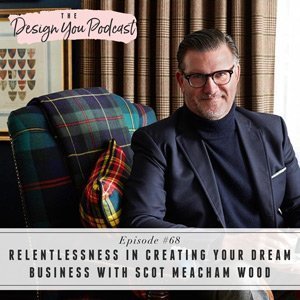
I have got a huge treat for you on the podcast this week, my friends! I’ve got my buddy Scot Meacham Wood on the show, and I’m so excited for you to listen in because I know his story is going to inspire all of you to go after your dream life and business.
We’re discussing Scot’s backstory, how he got into the creative field he’s in today, and all the juicy details of how he has gone after everything he’s wanted to create without hesitation. His brand and style are so uniquely him, and I’m sure many of you already know who he is, so buckle in for an amazing episode!
If you’re unsure whether to go after a project or idea because you just don’t know how to go about it, or if you even should, I’m so excited for Scot’s story today to give you that little push forward because if he can do it, you can do it too.
If you loved this episode or any of my other episodes, I would so appreciate you taking the time to leave me a rating and review on iTunes. It helps me know what you like and want more of, and it helps others know they need to listen to the podcast too!





